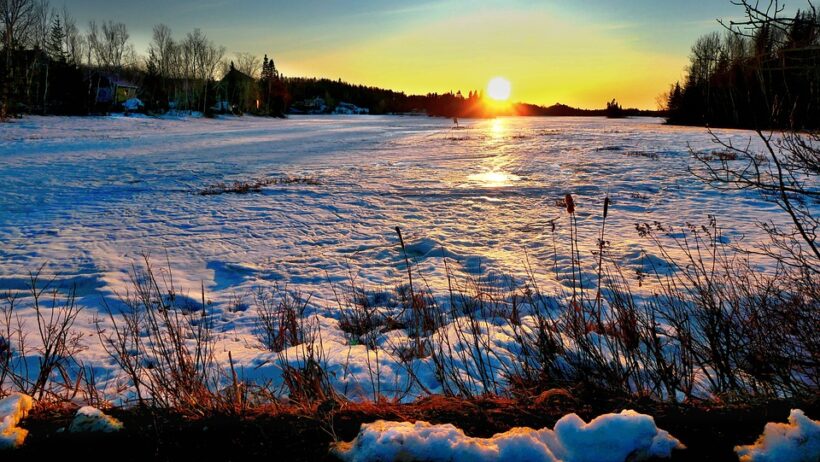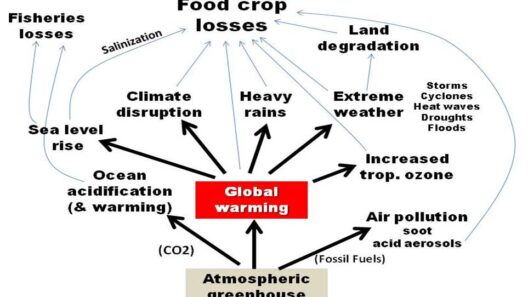Climate change and biodiversity are inexorably interlinked, each acting as a double-edged sword in the interplay of nature’s balance. To fully grasp the gravity of this interrelationship, one must recognize that biodiversity is akin to a tapestry, intricately woven from countless threads representing various species, ecosystems, and genetic variations. The stunning diversity of life on Earth is not merely an aesthetic wonder; it serves as the foundation upon which our planet’s ecological stability is built.
At the heart of the discourse surrounding climate change and biodiversity lies a pertinent truth: ecosystems are dynamic and resilient, yet they are also vulnerable to external pressures. As the climate warms, it acts like a looming shadow over these ecosystems, threatening various species with extinction, habitat loss, and altered evolutionary trajectories. This consequential shift generates cascading effects through the food web, akin to the ripples produced when a stone disrupts a still pond.
One central statement rings true amid the complex narrative of climate change: “Biodiversity loss exacerbates climate change.” This assertion encapsulates the cyclic relationship shared by our world’s ecosystems and the gradual, yet perilous, warming of our atmosphere. When biodiversity diminishes, so too does the planet’s ability to sequester carbon, regulate temperature, and, importantly, adapt to changing conditions. The forests—those grand sentinels of carbon storage—become increasingly susceptible to disease and devastation without the myriad species that sustain their health.
Consider the role of forests as sentinels in the face of climate change. They are not simply collections of trees; they house a remarkable wealth of organisms that interact in ways we are only beginning to understand. When diversity is compromised, it is reminiscent of a musical ensemble missing key instruments, resulting in a dissonant performance that fails to resonate with harmony. The role of each species, however small, is crucial—not unlike the unique notes that when combined, create a symphonic masterpiece.
Moreover, the oceans, which cover over 70% of the Earth’s surface, are facing a similar plight. As the climate warms and carbon dioxide concentrations rise, ocean waters become more acidic, impairing the ability of coral reefs—the rainforests of the sea—to thrive. These systems, rich with biodiversity, serve as critical habitats for countless marine species and act as natural barriers against storms and coastal erosion. The degradation of coral reefs due to climate change not only diminishes marine wildlife populations but jeopardizes the livelihoods of those dependent on healthy oceans.
In contrast, preserved ecosystems and rich biodiversity offer a sanctuary—a refuge in tumultuous times. Healthy ecosystems can adapt to changing climates, enhancing resilience against environmental stressors. For example, wetlands play a pivotal role in flood protection while acting as natural carbon sinks. Their ability to store carbon effectively makes them guardians in the struggle against climate change. When preserved and managed wisely, these ecosystems can bolster carbon sequestration efforts, serving as natural allies in mitigating climate impacts.
Another striking truth that emerges is the indirect effect of climate change on biodiversity through altered weather patterns. Events such as prolonged droughts and unprecedented floods manifest with increasing frequency, reshaping landscapes and decimating habitats. Species that cannot migrate, adapt, or endure these abrupt changes face extinction on a mass scale. Each loss of a species diminishes the repertoire of nature’s resilience, leaving ecosystems increasingly fragile and vulnerable to collapse.
Human intervention remains a double-edged sword; while industrial development and urban invasion fragment habitats, the preservation and restoration of biodiversity present a glimmer of hope. Initiatives aimed at reforestation, wetland restoration, and wildlife conservation are not merely acts of goodwill—they are essential strategies to enhance biodiversity and combat climate change. Such actions can regenerate damaged ecosystems, revive populations, and restore balance to the natural order, creating a sustainable pathway for future generations.
Ultimately, the fragility of our ecosystems underscores a universal truth: biodiversity is not merely an asset; it is a necessity. Acknowledging this reality compels us to reconsider our societal architecture and our relationship with nature. As stewards of the planet, we must champion policies that protect our irreplaceable biodiversity while simultaneously addressing the disproportionate impact of climate change. The resilience of our ecosystems is our greatest ally in navigating the turbulent waters ahead.
In conclusion, the nexus between climate change and biodiversity highlights an urgent and unyielding truth: the health of our planet’s ecosystems is paramount to our own survival. Just like the threads of an intricately woven tapestry, every species plays a significant role in our shared environmental destiny. Recognizing the vital importance of biodiversity as an ally in the fight against climate change is not just an environmental imperative; it is a testament to the interconnectedness of life on Earth. We must act decisively and with purpose to conserve this delicate balance, ensuring that the rich biodiversity we inherit is preserved for the generations that will follow.








